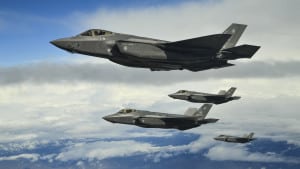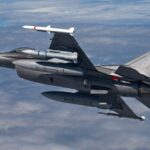
The head of the F-35 Joint Strike Fighter's joint program office (JPO) says he is not satisfied with the pace at which the jet’s price is falling.Navy Vice Adm. Mat Winter told reporters Feb. 28 that the cost needs to decline more quickly to keep the aircraft affordable, especially with the number of operational jets expected to jump from 280 today to 800-plus by the end of 2021. “The price is coming down; it’s not coming down fast enough,” Winter said.Winter expressed…

 By
By 











